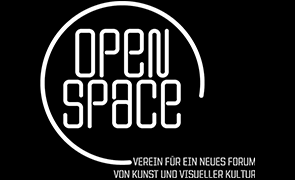An inter-urban platform in public space that connects suburban sites in the cities of Krakau, Vienna and Linz
Concept: Claudia Eipeldauer and Stefanie Wuschitz
Programming: Philipp Lammer
de-othering machine
Stefanie Wuschitz / Claudia Eipeldauer / Philipp Lammer »
The De-Othering machine is a device, a coercive structure or microstructure that acts to channel basic human capacities: perceiving the other, reacting to the other and relating to the other. At the same time it leaves space for tactical phantasies, creative projections and productive misconceptions of who the other might be. The De-Othering machine is a temporary online communication platform with a self-organizing dimension. Urban spaces in two different cities will get connected through two projection screens that display abstracted animal characters. Each character can get synchronized and controlled by one user. This way a passer-by can start controlling an animated character, speak in order to give the character a voice, and move in order to trigger the character’s movements.
It is open to the user if he/she wants to go along with the role suggested by the animation or simply engage in a conversation while encountering a person in a different city. Since the two animated characters on the two screens in two different cities mask the real faces of it’s users, each encounter opens the possibility to new behavioural practices, and ‘silly’ games and experiments. In disguise, the two people communicating can choose to either improvise a new persona to enact their character or find out more about the person at the other end of the installation.
The idea is to have people in different urban spaces play with each other via video chat. Shop windows in three different cities serve as projection canvas for animated Avatars. The animations consist of each one interactive Avatar, which involves people passing by into a conversation. The person stopping at the shop window and interacting with the Avatar at (site A) is video tracked. The face movement is tracked in order to read his or her face expression and translate it onto the face of the avatar. The user’s face expression will then get transferred to an Avatar on a different site (site B). On this site B, a webcam tracks the face expression of a second user. The face expressions of the second user on site B is transferred back to site A.
The Avatar therefore serves as an interface to a different city. Via Webcam each user can control one avatar and see the one controlled by a user in a different city. This way the user slips into a new skin and can communicate with a person on a different place without having their gender, ethnic identity or age exposed. In order to engage young people into this platform of exchange, there will be three workshops in the three different urban environments the project will connect. In the workshops the young participants will discuss their online communication habits, their feeling of belonging expressed through digital media and will take ownership and responsibility of one of the three stations that serve as nodes in the network between Linz, Krakau and Vienna. A randomizing algorithm will make sure that the users don’t know to which city they are connected with, encouraging curiosity for the other and openness to start communicating.
http://deothering.wordpress.com/






